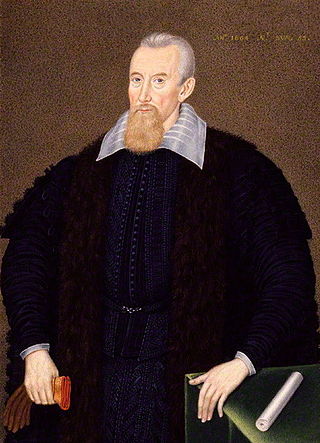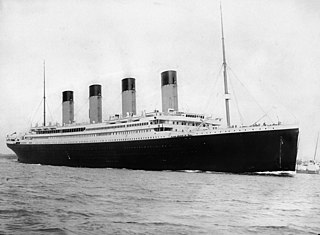Related Research Articles

The PS Lady Elgin was a wooden-hulled sidewheel steamship that sank in Lake Michigan off the fledgling town of Port Clinton, Illinois, whose geography is now divided between Highland Park and Highwood, Illinois, after she was rammed in a gale by the schooner Augusta in the early hours of September 8, 1860. The passenger manifest was lost with the collision, but the sinking of Lady Elgin resulted in the loss of about 300 lives in what was called "one of the greatest marine horrors on record". Four years after the disaster, a new rule required sailing vessels to carry running lights. The Lady Elgin disaster remains the greatest loss of life on open water in the history of the Great Lakes.

Thomas Bruce, 7th Earl of Elgin and 11th Earl of Kincardine was a British nobleman, soldier, politician and diplomat, known primarily for the controversial procurement of marble sculptures from the Parthenon and other structures on the Acropolis of Athens.

James Bruce, 8th Earl of Elgin and 12th Earl of Kincardine, was a British colonial administrator and diplomat. He served as Governor of Jamaica (1842–1846), Governor General of the Province of Canada (1847–1854), and Viceroy of India (1862–1863). In 1857, he was appointed High Commissioner and Plenipotentiary in China and the Far East to assist in the process of opening up China and Japan to Western trade. In 1860, during the Second Opium War in China, he ordered the destruction of the Old Summer Palace in Beijing, an architectural wonder with immeasurable collections of artworks and historic antiques, inflicting incalculable loss of cultural heritage. Subsequently, he compelled the Qing dynasty to sign the Convention of Peking, adding Kowloon Peninsula to the British crown colony of Hong Kong.

Earl of Elgin is a title in the Peerage of Scotland, created in 1633 for Thomas Bruce, 3rd Lord Kinloss. He was later created Baron Bruce, of Whorlton in the County of York, in the Peerage of England on 30 July 1641. The Earl of Elgin is the hereditary Clan Chief of Clan Bruce.

The title Earl of Kincardine was created in 1647 in the Peerage of Scotland for Edward Bruce, grandson of George Bruce of Carnock, who was the younger brother of the 1st Lord Kinloss, he in turn being the father of the 1st Earl of Elgin.
This is a list of people who have served as Lord Lieutenant of Fife.

Elgin Bridge is a vehicular box girder bridge across the Singapore River, linking the Downtown Core to the Singapore River Planning Area located within Singapore's Central Area. It was built between 1925 and 1929.
Events from the year 1816 in the United Kingdom.

SS Pacific was a wooden sidewheel steamer built in 1850 most notable for its sinking in 1875 as a result of a collision southwest of Cape Flattery, Washington. Pacific had an estimated 275 passengers and crew aboard when she sank. Only two survived. Among the casualties were several notable figures, including the vessel's captain at the time of the disaster, Jefferson Davis Howell (1846–1875), the brother-in-law of former Confederate President Jefferson Davis. The sinking of Pacific killed more people than any other marine disaster on the West Coast at the time.

Edward Bruce, 1st Lord Kinloss PC was a Scottish lawyer and judge.

Thomas William Bowlby was a British correspondent for The Times in Germany and China in the 19th century. A "pioneer in the risky business of war reportage", his torture and death during the Second Opium War was a factor in the British and French decision to raze the Old Summer Palace (Yuanmingyuan) in Beijing.

Sir Frederick William Adolphus Wright-Bruce, GCB was a British diplomat.

RMS Titanic was a British passenger liner, operated by the White Star Line, that sank in the North Atlantic Ocean on 15 April 1912 after striking an iceberg during her maiden voyage from Southampton, England to New York City, United States. Of the estimated 2,224 passengers and crew aboard, more than 1,500 died, making it the deadliest sinking of a single ship up to that time. It remains the deadliest peacetime sinking of an ocean liner or cruise ship. The disaster drew public attention, provided foundational material for the disaster film genre, and has inspired many artistic works.

America was a packet boat transporting passengers, mail, and packages between settlements along the North Shore of Lake Superior, an inland sea in central North America. Built in 1898, America sank in Washington Harbor off the shore of Isle Royale in 1928, where the hull still remains. The wreck was placed on the National Register of Historic Places in 1984.

Martha Bruce, Countess of Elgin and Kincardine, born Martha White and known for most of her life as Lady Elgin, was the wife of Charles Bruce, 5th Earl of Elgin and 9th Earl of Kincardine, mother of the collector Thomas Bruce, 7th Earl of Elgin, and governess to Princess Charlotte of Wales, daughter of the future King George IV, at the time second in line to the throne.
Maria was a brigantine built in Dublin, Ireland, and launched in 1823 as a passenger ship. On 28 June 1840, she wrecked on the Margaret Brock Reef, near Cape Jaffa in the Colony of South Australia, somewhere south-west of the current site of the town of Kingston SE, South Australia. The wreck has never been located.
Major-General The Honourable Robert Bruce was a British Army officer who served as Governor to the young Prince of Wales, later King Edward VII.
The SS G. P. Griffith was a passenger steamer that burned and sank on Lake Erie on 17 June 1850, resulting in the loss of between 241 and 289 lives. The destruction of the G. P. Griffith was the greatest loss of life on the Great Lakes up to that point, and remains the third-greatest today, after the SS Eastland in 1915 and the Lady Elgin in 1860.

Lord William Bentink was launched in 1828 at Bristol. She made one voyage for the British East India Company (EIC), and one transporting convicts to Tasmania. She was wrecked on 18 June 1840 off the harbour of Bombay.

References
- ↑ Mackenzie, Compton (1954). Realms of Silver . Routledge & Kegan Paul.
- ↑ Elgin, James Bruce (1872). Walrond, Theodore (ed.). Letters and Journals of James, Eighth Earl of Elgin. John Murray. pp. 325–328.
- ↑ Bowlby, Ronald (18 June 2004). "A Times man in war-torn China" . The Times . Retrieved 2008-01-03.
- ↑ Bowlby, Thomas William; Bowlby, C.C. (1906). An Account of the Last Mission and Death of Thomas William Bowlby. Privately printed by C.C. Bowlby. p. 126.
- "Peninsular & Oriental Steam Navigation Company / P&O Line". The Fleets. The Ships List. 25 June 2006. Archived from the original on 1 May 2009. Retrieved 2008-01-03.